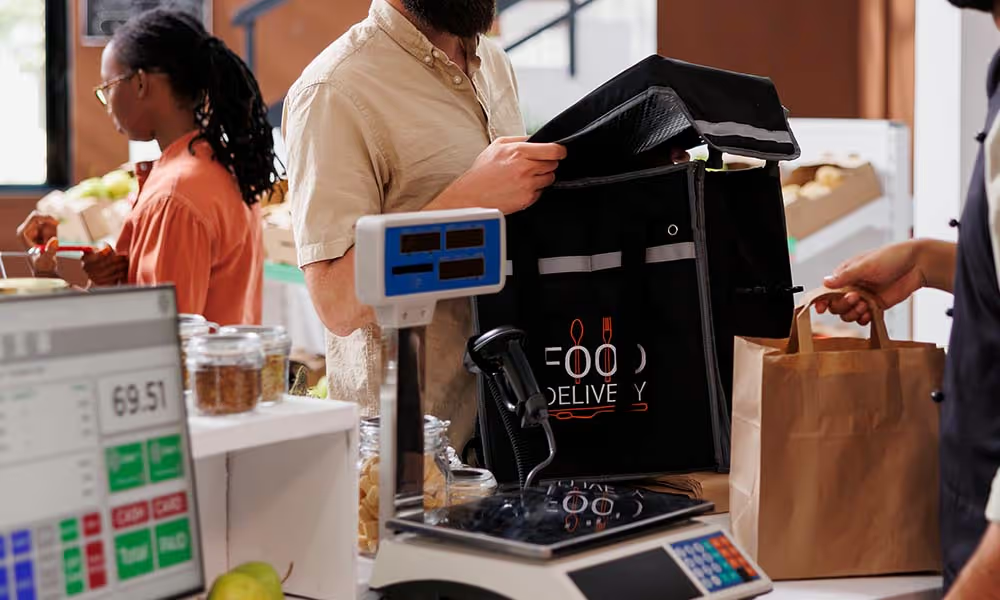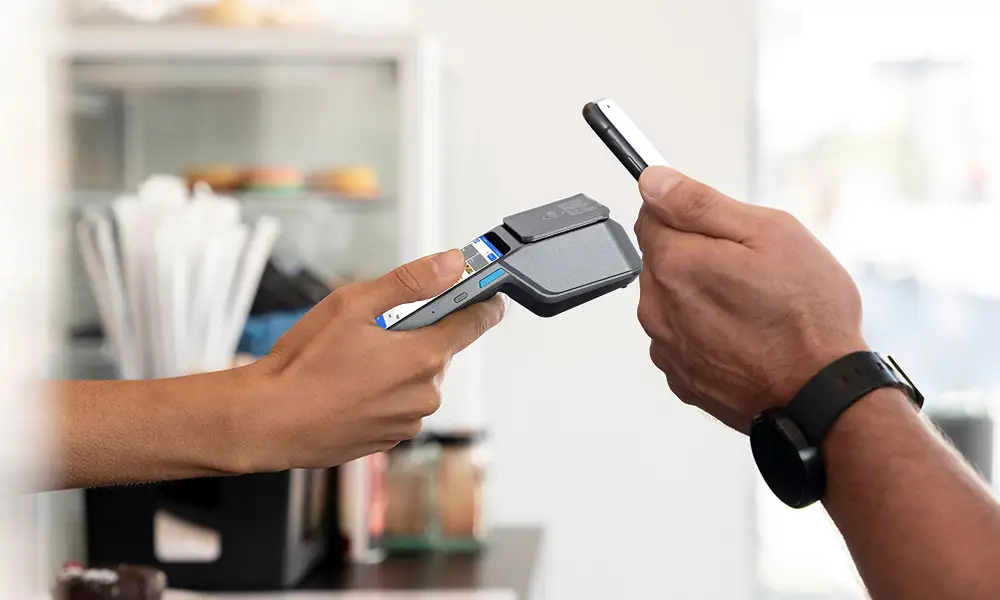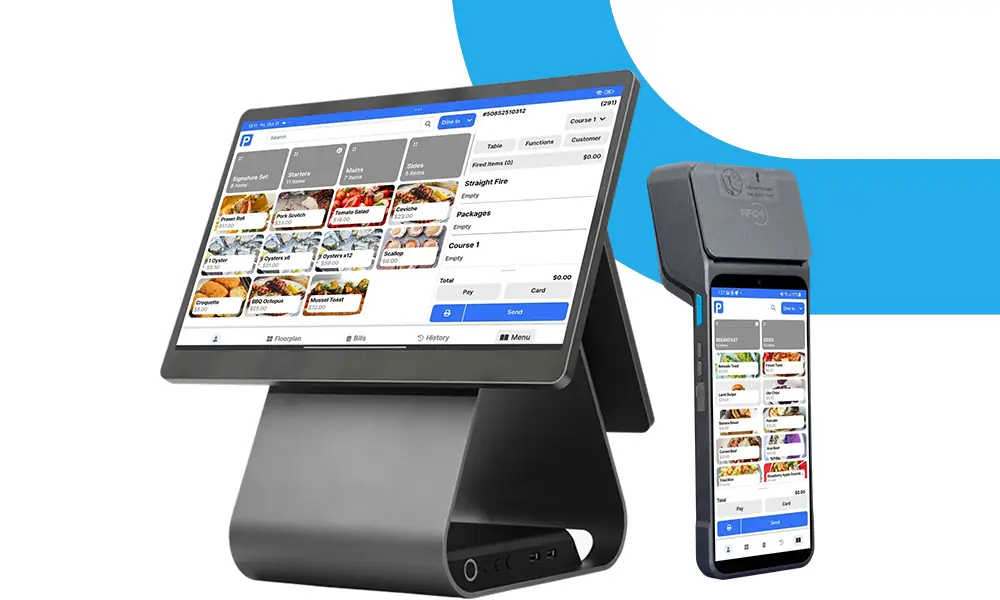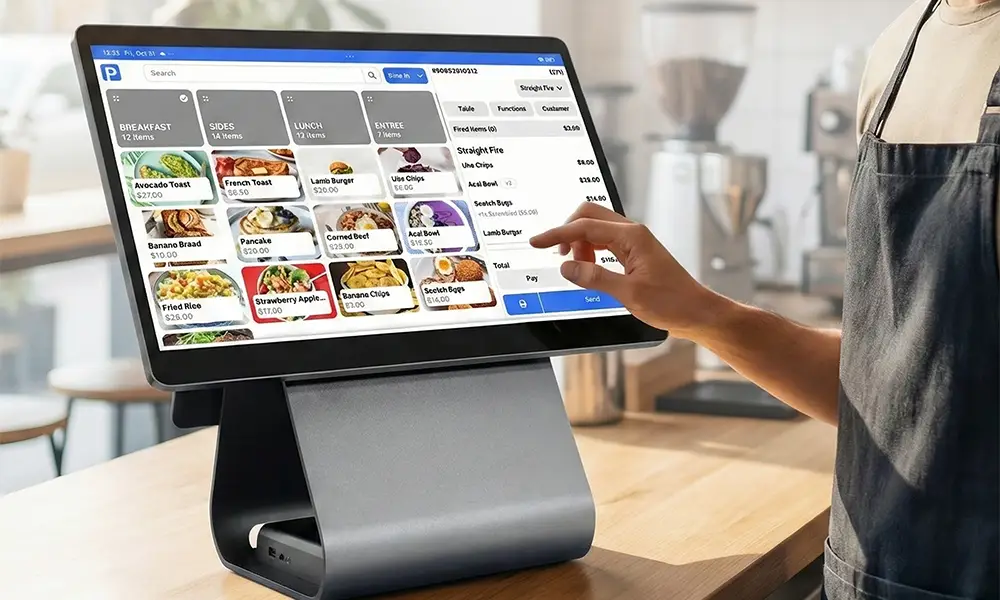Ever watched customers grow frustrated while waiting to pay their bill? Or have your servers faced the challenge of juggling tables during peak hours, just to complete payments?
These common pain points in the restaurant industry are exactly what pay-at-the-table technology aims to solve.
With pay-at-the-table, customers handle payments directly at their table, saving time, boosting security, and improving the overall dining experience. But to make the most of this technology, it’s essential to understand the best practices that ensure smooth implementation and happy customers.
In this guide, we’ll explore the ins and outs of pay-at-the-table, essential tips for getting started, and how it can transform your restaurant operations.
1. What is Pay-at-the-Table Technology?
Pay-at-the-table technology allows diners to pay for their meals without waiting for the server to return with a bill. Using handheld devices or mobile POS systems, servers bring the payment terminal directly to the customer’s table, making it easy to complete transactions right there.
Key Features of Pay-at-the-Table
- Contactless Payment Options: Customers can tap to pay with cards or mobile wallets.
- Split Bill Capabilities: Allows groups to split bills quickly and easily.
- Receipt Options: Customers can receive digital or printed receipts based on their preference.
- Tipping: Pay-at-the-table devices often prompt customers to leave a tip, which can increase tips for servers.
The convenience of pay-at-the-table technology not only improves the customer experience but also reduces the workload for servers, allowing them to manage more tables and provide better service.
2. Why Pay-at-the-Table is a Game Changer for Restaurants
Adopting pay-at-the-table technology offers multiple advantages, from operational efficiency to customer satisfaction.
Here’s why it’s transforming the restaurant industry:
1. Speeds Up Table Turnover
With pay-at-the-table, customers don’t have to wait around for their bill. Payments are processed quickly at the table, allowing for faster table turnover, which is especially beneficial during peak hours.
2. Improves Customer Satisfaction
Customers appreciate a seamless dining experience. The ability to pay right at the table means no more waiting or confusion about who has the bill, enhancing the overall customer experience.
3. Reduces Payment Errors and Increases Security
Since payments are processed immediately in front of customers, pay-at-the-table minimises the risk of errors and fraud. Customers can trust that their payment information is secure and that the process is transparent.
4. Increases Tips for Servers
With on-the-spot tipping options, pay-at-the-table can lead to higher gratuities. Customers are often more likely to leave a tip when prompted directly on the payment device.
5. Streamlines Service and Reduces Server Workload
Pay-at-the-table technology frees servers from running back and forth with bills and receipts, allowing them to focus on delivering excellent service. With this streamlined process, servers can manage more tables effectively.
By adopting pay-at-the-table solutions, restaurants are able to offer a quicker, more secure, and customer-friendly experience that boosts satisfaction and operational efficiency.
3. Best Practices for Implementing Pay-at-the-Table Solutions
Making the shift to pay-at-the-table technology requires a thoughtful approach to ensure smooth operations and satisfied customers. Here are some best practices to help you make the most of this system:
1. Choose the Right Device for Your Restaurant
Not all pay-at-the-table solutions are the same. Select a device that fits your restaurant’s unique needs:
- Handheld POS Devices: Compact, portable, and perfect for full-service restaurants.
- Mobile POS Integration: Systems that connect to your existing POS software, ensuring seamless operations.
- Contactless Payment Options: Choose devices that support contactless payments for added convenience.
2. Train Staff Thoroughly
For pay-at-the-table technology to work well, your servers need to be comfortable using it. Provide thorough training, covering topics like:
- Navigating the Device: Teach staff how to operate the POS efficiently.
- Handling Payment Issues: Prepare staff for handling common issues, such as card declines or customer questions.
- Promoting Tipping Options: Show servers how to encourage tipping politely without pressuring customers.
3. Offer Digital and Printed Receipts
Some customers prefer printed receipts, while others are happy with digital versions. Make sure your device offers both options to accommodate all preferences. Additionally, offering email or SMS receipts allows you to collect customer contact information for future marketing efforts.
4. Communicate the New Process to Customers
Introducing a new payment system can be a surprise to regulars, so make sure to communicate this change:
- Explain the Benefits: Let customers know that pay-at-the-table means faster service and greater security.
- Be Available for Questions: Have servers ready to answer any questions customers might have about the new process.
5. Monitor and Optimise
Track performance and collect feedback from both staff and customers. Look for patterns in customer satisfaction, server efficiency, and tips. Make adjustments as needed to optimise the pay-at-the-table experience further.
By following these best practices, you can create a smooth and effective pay-at-the-table process that customers and staff alike will appreciate.
4. Enhancing Customer Experience with Pay-at-the-Table
The goal of pay-at-the-table technology isn’t just about making payments faster—it’s about creating a memorable customer experience. Here’s how you can make the most of pay-at-the-table to keep customers coming back:
Speed Up Payments Without Rushing
The beauty of pay-at-the-table is that it allows for fast payments without the customer feeling rushed. Servers can bring the bill, explain the new process briefly, and let customers complete their payment at their own pace.
Ensure Secure and Transparent Transactions
With card fraud being a common concern, pay-at-the-table systems provide peace of mind by allowing customers to keep their cards in hand during the transaction. This transparency builds trust and confidence in your restaurant.
Offer a User-Friendly Experience
The simpler the interface, the more comfortable customers will feel using it. Select a device with an intuitive interface, so customers can navigate options easily. From tipping to receipt options, every step should be straightforward.
Personalise Service
Pay-at-the-table technology can free up servers to focus more on customer interactions, like making recommendations, checking on satisfaction, and engaging in genuine conversation. With less time spent on transactions, servers can make customers feel valued.
With these tips, pay-at-the-table technology can significantly elevate the dining experience, ensuring customers feel valued, comfortable, and in control of their payment process.
5. How to Choose the Right Pay-at-the-Table Solution for Your Restaurant
Selecting the right pay-at-the-table system is crucial for achieving the best results. Here are some factors to consider when evaluating your options:
Consider Your Restaurant’s Needs
Determine the specific requirements of your restaurant. Full-service restaurants may benefit from a comprehensive POS integration, while a small café might only need basic mobile payment options.
Look for User-Friendly Features
The right solution should be easy for both staff and customers to use. Look for features like a clear interface, responsive touch screen, and quick navigation.
Ensure Compatibility with Your POS System
If you already have a POS system, check if the pay-at-the-table device integrates seamlessly. This prevents data entry errors and keeps your transactions consistent.
Check for Flexible Payment Options
Choose a solution that accepts various payment methods, including contactless and mobile wallet options, which are increasingly popular with customers.
Prioritise Security and Support
Customer security should be a top priority. Look for systems that offer end-to-end encryption and comply with industry security standards. Additionally, ensure your provider offers reliable customer support to resolve any issues quickly.
By selecting a pay-at-the-table solution that aligns with your restaurant’s needs, you’ll be well-positioned to enhance customer satisfaction and streamline your payment process.
Final Word: Elevate Your Restaurant’s Service with Pay-at-the-Table Solutions
Pay-at-the-table technology is transforming the dining experience, making payments faster, more secure, and more convenient for customers. By implementing a pay-at-the-table system, you’re not only reducing wait times but also creating a more transparent and satisfying experience for your guests.
Ready to see how pay-at-the-table technology can benefit your restaurant? Book a free demo today to explore your options. Get started here!
FAQs About Pay-at-the-Table Systems
1. How does a pay-at-the-table system work?
A pay-at-the-table system allows customers to pay directly at their table, using a handheld POS device brought to them by the server. Customers can complete the transaction using a credit card, debit card, or contactless payment.
2. What types of payments are supported by pay-at-the-table systems?
Most pay-at-the-table systems support a variety of payment methods, including credit and debit cards, mobile wallets (such as Apple Pay and Google Pay), and sometimes even gift cards.
3. Is a pay-at-the-table system secure?
Yes, pay-at-the-table systems are designed with security in mind. They use encryption to protect customer data, and since payments are processed in front of the customer, it reduces the risk of card fraud.
4. How much does a pay-at-the-table system cost?
Costs vary based on features and provider, but many systems operate on a monthly subscription model, typically ranging from $50 to $150 per month.
5. Can pay-at-the-table systems improve tipping for servers?
Yes, many pay-at-the-table devices have tipping prompts, which can encourage customers to leave gratuities, often resulting in higher tips for servers.


%201.svg)
%201.svg)





.png)
.png)
